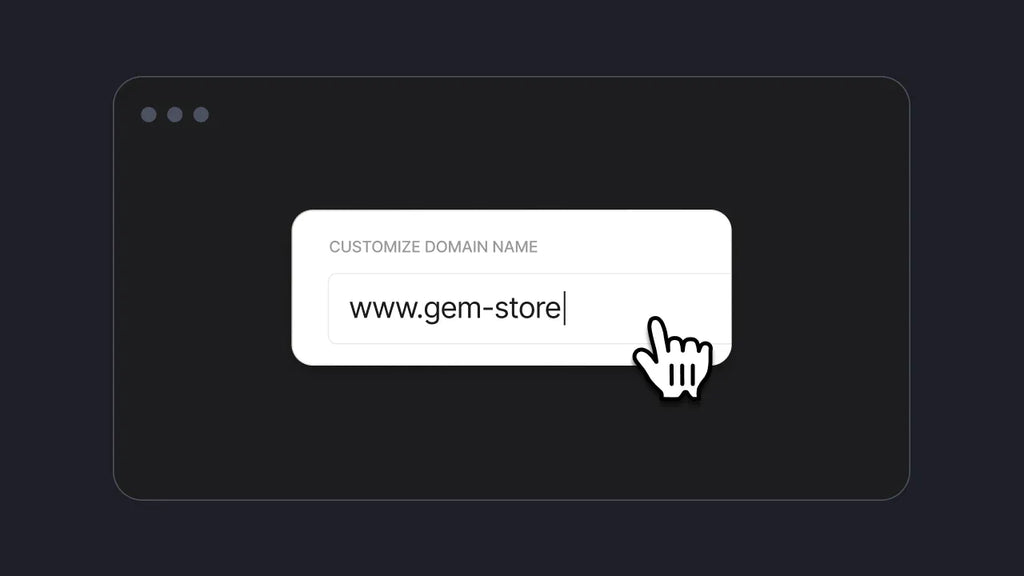Understanding of 2025 eCommerce: How Much Does a Website Cost?

In the modern digital landscape, a powerful eCommerce website is essential for expanding your business's online presence and reach. So how to own a highly optimized website?
- Research, learn how to custom, optimize an eCommerce website building tool or hire someone to do it.
Either way, the cost to build a website is the first factor that everyone thinks of. Then you are in the right place. We will help you answer the question "How much does an eCommerce website cost?", so you can consider making a reasonable financial investment in this large eCommerce market.
Factors Influencing The eCommerce Website Price
Understanding the cost factors is essential for businesses to plan their budget strategically. Let's start by understanding the factors that determine the cost of an eCommerce website.
- Platform and Hosting: The choice of eCommerce platform (e.g., Shopify, WooCommerce, Magento) and hosting plan can significantly impact the price.
- Website Design and Customization: Custom designs tailored to your brand can be more expensive than using pre-designed templates. And don’t forget to ensure that your website is mobile-optimized.
- Development and Functionality: Advanced features like custom plugins, integrations, and specialized functionality will increase costs.
- Content SEO and Marketing Tools: Implementing SEO best practices and integrating marketing tools for analytics, email marketing, and social media can increase expenses.
- Security Features: Investing in robust security measures, such as SSL certificates and compliance with data protection regulations, is crucial and can affect the price.
- Maintenance and Support: Ongoing maintenance, updates, and technical support are necessary to keep the website running smoothly, adding to the overall cost.
- Payment Gateways: Integrating multiple payment gateways to offer customers various payment options can also impact the total cost.

How Much Does an eCommerce Website Cost?
In this section, we will provide a general overview of the cost range for eCommerce websites based on different levels of customization. The costs are categorized into three levels: basic, mid-range, and custom.
#1 Basic eCommerce website: $1000 - $5000
A basic eCommerce website cost typically falls within the range of $1,000 to $5,000. This budget covers essential features such as product pages, a functional shopping cart, and a straightforward checkout process.
This solution is ideal for small retailers, startups, and service-based businesses like consultants or freelancers. A basic eCommerce website efficiently enhances brand visibility, showcases offerings, and facilitates simple online transactions.
#2 Mid-range eCommerce website: $5,000 - $10,000

The price can be twice as much as the basic websites.
Moving up to a mid-range eCommerce website, the price can be up to $10,000.
Within this price range, businesses expect upgraded features beyond the basics. This includes a user-friendly Content Management System (CMS) for easier website management, more advanced design customization options to enhance the site's visual appeal, and integration with payment processing.
Some types of businesses that find it suitable are brands with product ranges, professional services, and specialty stores for food, equipment, or clothes.
Learn more: Start an eCommerce Business with No Money: The Complete Guide (+ Exclusive Promotion)
#3 Custom eCommerce website: $10,000 and above
For businesses requiring a custom eCommerce website with unique features, complex functionalities, and high-end design, costs can start from $10,000. This amount can go even higher based on specific requirements.
This type of website is ideal for businesses that prioritize uniqueness and aim to gain a competitive advantage, such as B2B companies and high-end retailers.
Learn more: What is “High-Ticket Sales”? Start High-Ticket Dropshipping
#4 Ongoing costs
The ongoing costs are the continuous expenses incurred to keep your online store running and functional. There are some common cost categories to consider:
|
Types of expenses |
Element |
Price (per month) |
|
Essential expenses |
Domain registration |
$1 - $2 |
|
Web hosting |
$2 - $500 |
|
|
Payment processing |
2% - 4% |
|
|
SSL certificates |
$8 - $1000 |
|
|
Customer support |
Varies based on live chat tools, email services or hiring staff |
|
|
Operational expenses |
Platform fee |
$20 - $300 |
|
Inventory management software |
$80 - $200 |
|
|
Analytics and SEO tools |
$99 - $399 |

How To Build An eCommerce Website (Step-by-step)
Building an eCommerce website involves several crucial steps. Here's a step-by-step guide to help you through the process:
Step 1: Select a platform and set up your store
Before building your eCommerce website, choosing the right platform is crucial. Decide between a hosted solution (your site is hosted on the platform's servers) or a self-hosted option (you control your site's hosting). Hosted platforms like Shopify and BigCommerce simplify setup, while self-hosted options like WooCommerce for WordPress offer greater customization.
We recommend choosing Shopify for its ease of use for beginners. It is also a fully hosted solution, meaning it takes care of hosting, security, and maintenance.

Once you're set up, familiarize yourself with the Shopify admin panel. This is where you'll manage your products, orders, and customers.
Step 2: Design and development
Now, you will need to design your store. The landing page is your digital storefront, and its visual appeal plays a significant role in capturing visitors' attention.
To enhance your Shopify store, consider using third-party apps like GemPages. It offers powerful tools for creating stunning, conversion-focused pages with ease. Unlock advanced design capabilities, boost user experience, and drive more sales with GemPages—making your Shopify store a standout success.

We provide customized landing pages that you can choose from.
Visit Gempages to access a collection of conversion rate optimized templates, designed to enhance the functionality of your landing page. These templates are crafted with user experience in mind, providing a seamless and visually appealing interface for your customers.
Simply use the drag-and-drop editor to add and customize sections, elements, and content. You can add product grids, banners, hero images, text blocks, buttons, and more.
Learn more: 10+ Best Above the Fold Examples to Get Inspired
Step 3: Optimize for conversions
GemPages comes with built-in conversion optimization tools to help you boost your sales. These include:
- A/B testing: Test different versions of your pages to see which ones convert better.
- Pop-ups and opt-in forms: Capture leads and grow your email list.
- Countdown timers: Create a sense of urgency and encourage impulse purchases.
Step 4: Calculate the price
Here's a general breakdown of the costs involved in building a Shopify website:
- Shopify plan: Shopify plans range from $29 to $299 per month. The more expensive plans offer more features and higher store limits.
- Domain name: A domain name will typically cost around $10 per year.
- Theme: As mentioned above, free themes are available, but premium themes can cost anywhere from $50 to $200.
- Apps: The cost of apps will vary depending on the app you choose. Some apps are free, while others can cost up to $200 per month.
- Developer: If you hire a developer, you can expect to pay anywhere from $50 to $200 per hour.
Based on these factors, here's a rough estimate of how much it could cost to build a Shopify website:
- Simple website: $29 per month for the Shopify plan + $10 per year for the domain name = $39 per month.
- Average website: $79 per month for the Shopify plan + $50 for a premium theme + $10 per year for the domain name = $139 per month.
- Complex website: $299 per month for the Shopify plan + $200 for a premium theme + $10 per year for the domain name + $200 per month for apps = $509 per month.
This general cost estimate provides a foundation for budgeting your Shopify store, but it's essential to assess your unique business requirements and adjust accordingly.
Final Thoughts
In summary, this guide has offered a comprehensive review of the question, "How much does an eCommerce website cost?" It has delved into various cost factors, including platform selection, design considerations, ongoing expenses, and platform-specific recommendations like Shopify.
So, businesses can utilize the insights from this guide to make informed decisions regarding the cost of developing and maintaining an eCommerce website.




 Facebook Community
Facebook Community Change Log
Change Log Help Center
Help Center












